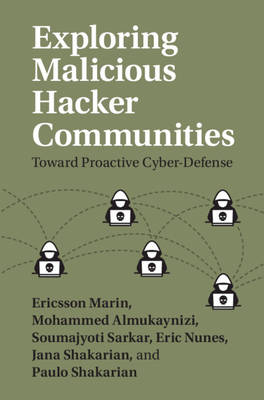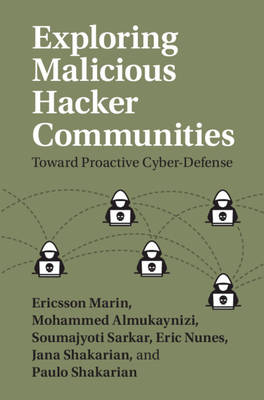
- Afhalen na 1 uur in een winkel met voorraad
- Gratis thuislevering in België vanaf € 30
- Ruim aanbod met 7 miljoen producten
- Afhalen na 1 uur in een winkel met voorraad
- Gratis thuislevering in België vanaf € 30
- Ruim aanbod met 7 miljoen producten
Zoeken
Exploring Malicious Hacker Communities
Toward Proactive Cyber-Defense
Ericsson Marin, Mohammed Almukaynizi, Soumajyoti Sarkar, Eric Nunes, Jana Shakarian, Paulo Shakarian
Hardcover | Engels
€ 72,95
+ 145 punten
Omschrijving
Malicious hackers utilize the World Wide Web to share knowledge. Analyzing the online communication of these threat actors can help reduce the risk of attacks. This book shifts attention from the defender environment to the attacker environment, offering a new security paradigm of 'proactive cyber threat intelligence' that allows defenders of computer networks to gain a better understanding of their adversaries by analyzing assets, capabilities, and interest of malicious hackers. The authors propose models, techniques, and frameworks based on threat intelligence mined from the heart of the underground cyber world: the malicious hacker communities. They provide insights into the hackers themselves and the groups they form dynamically in the act of exchanging ideas and techniques, buying or selling malware, and exploits. The book covers both methodology - a hybridization of machine learning, artificial intelligence, and social network analysis methods - and the resulting conclusions, detailing how a deep understanding of malicious hacker communities can be the key to designing better attack prediction systems.
Specificaties
Betrokkenen
- Auteur(s):
- Uitgeverij:
Inhoud
- Aantal bladzijden:
- 200
- Taal:
- Engels
Eigenschappen
- Productcode (EAN):
- 9781108491594
- Verschijningsdatum:
- 1/07/2021
- Uitvoering:
- Hardcover
- Formaat:
- Genaaid
- Afmetingen:
- 196 mm x 234 mm
- Gewicht:
- 408 g

Alleen bij Standaard Boekhandel
+ 145 punten op je klantenkaart van Standaard Boekhandel
Beoordelingen
We publiceren alleen reviews die voldoen aan de voorwaarden voor reviews. Bekijk onze voorwaarden voor reviews.











